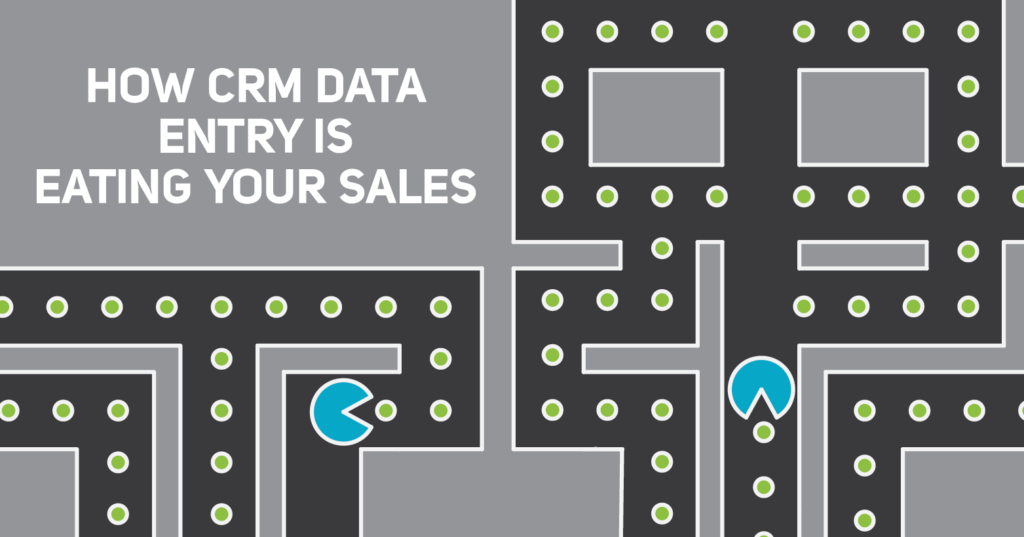The time your sales employees actually spend selling is decreasing year after year. Administrative work of all kinds is piling up, with CRM data entry being a prominent topic that not only costs time but typically also causes a lot of friction.
As a sales leader, you want your sales employees to focus on sales, but you also need the data in your CRM to be able to manage your operations. How do you find the right balance? Research has shown that the average employee using Salesforce spends about 4 hours per week entering data into the CRM. Can this be justified?
More importantly, the problem around data entry is much bigger than “just” the fact that it takes 10% of your sales resources. It has far reaching consequences on employee satisfaction, management decisions, and the outcome of your sales efforts. This article is meant as an eye-opener to create awareness of these problems.
Employees hate data entry
Adding emails and contact information into a system is a repetitive task that doesn’t add much value to results the sales employee achieves. Not surprisingly, sales employees will do anything to avoid this job. And can you blame them? In the end, they just want to focus their time on engaging with your customers, which is also in the interest of your company.
In this context and in order to encourage employees to enter sales data into the CRM, companies go as far as to change their bonus structure. Even though this is often a last resort, it is still a very primitive way of managing people. Imagine how this is received by an employee who generated good sales, and then doesn’t get paid out because the data hasn’t been entered properly. Wouldn’t you rather have this person do more sales instead of typing data into a system anyway?
Now, of course you can say that it’s just part of the job. But you want high-performing people at the top of their game, right? Then you’ll probably want to consider other solutions to get the job done instead of refusing their payout.
You will always have a blind spot
Do you think the data entry process in your organization is working well? If your employees are not always working directly in the CRM, you are most likely wrong. On average, only 40% of all sales updates are ever entered into a CRM. Again, the reasoning behind this is actually easy to understand.
No matter how tightly you control data entry, employees will always assess if entering a certain piece of information will add value. For example, if no significant progress has been made, a prospect’s details will probably not be entered into the CRM.
From a productivity perspective, this approach makes sense and allows the employee to focus on the accounts where progress is being made. However, from a management perspective, the result is that you only have data on what (almost) worked, and not on what didn’t work. This creates a huge blind spot for your decisions.
Further disadvantages of manual data entry
There are numerous other reasons why your employees might not enter the information. Think, for example, of new employees that are not trained to use Salesforce yet. Or it could even be that some of your best performing sales people hold back information to strengthen their position within the company.
In addition, data is typically only entered at certain moments of the week or month. Either when a reminder is sent to enter the data, or shortly before a team meeting where results are being discussed. This means that only at specific moments will you have all information in your CRM to actually make good decisions.
Finally, what happens if a sales rep leaves the company? Typically, a large part of the pipeline simply goes up in smoke. Vanished, as if it was never there. You lose any progress made, and might even sabotage other sales reps who pick up those prospects and don’t know the history. All because the data wasn’t entered.
Why automation is the only solution
If you think that all these things don’t happen at your organization, think back at how much effort it took to get people to enter all the data in the system. Your employees are using the most efficient approach to fulfill the requirements, but still have the maximum amount of time to increase their bonus. This means that, by default, not all information is entered.
Given the cost and complexity of the issue and the conflict of interest for the employees, the only real solution can be to take this work away from them. The 4+ hours per week spent on entering the data, and the time and energy spent on the discussion around it, can be saved by automating this process.
With this in mind, we recently founded Thrive for Email – a virtual sales assistant that saves all customer data and communication to Salesforce fully automatically. Unlike other solutions that just sync emails, our system has the intelligence to also define next actions, without requiring any action from the user. Our aim is to relieve sales employees of administrative work completely and support sales leaders in creating a high-performance sales organization.
Data entry is costing your employees valuable time and energy, and the trend shows that this cost is just increasing. With today’s technology, the question could be asked if CRMs shouldn’t be more intelligent by now. Have a critical look at your sales organization and you’ll probably start seeing the leaks. Don’t allow this to eat your sales organization from the inside.



